Click here to jump to the Dog Clipper Blade Sizes Chart
Whether it’s about Safety issues, Costs or Trust issues, more and more dog owners are deciding to save money by skipping the professional groomer, and instead, they are learning how to groom their dog themselves. The Internet has hundreds of resources, videos, and ideas on how to groom every breed of dog, so it’s not difficult to learn. Did you know when it comes to grooming one of the critical things
is selecting Dog Clippers Blade Sizes to suit your pup?
Here is why.
One of the MOST difficult tasks when grooming a dog is keeping it still 🙂 Here is the most effective solution we have come across so far
Foldable Dog Grooming Table
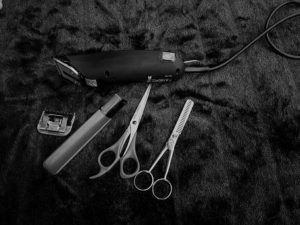
Things to Consider
Professional groomers use different sizes of blades for your dog’s body, ears, face, legs, and tail, all depending on the breed of your dog. You also need to consider the type of fur your dog has such as curly or straight, and matted or fine. Some dog clippers come with multiple blade sizes, but some only come with one size. Read our article about the best dog clippers for an overview of the various clippers that are available on the market.
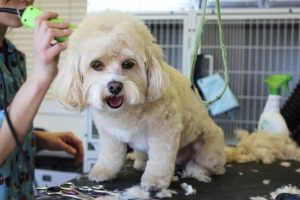
The competition between brands has led the manufacturers to create some specialty clippers with what they call proprietary blades, meaning that they are only compatible with clippers made by the same brand. If you see something that says “for some models only,” keep in mind that those blades will not be universal.
Types of Blades
Skip Tooth Blades vs. Fine-Tooth Blades
Skip tooth and fine-tooth refers to the amount of space between the teeth on the blade. The fine-tooth blades will have very little space between each tooth, while the skip tooth option will leave some gaps in between the teeth.
Skip tooth blades are the most common blades used for the first initial cut of a dog during the grooming process. They are also the blade that most often comes with clippers if there is only one blade. They are best for cutting through thick, matted, or curly hair.
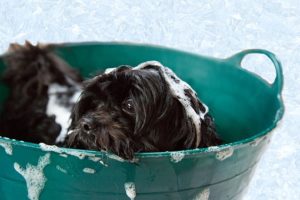
Fine tooth blades provide you with a cleaner, smoother look. They also make your dog’s coat feel softer than skip tooth blades. They work best on fine or thin hair, and if you do try to use them to cut through matted hair, you will get frustrated because they will get stuck. You can tell if you are using a fine-tooth blade because they are marked with an F after the blade number.
If you used a skip tooth blade for the original cut, you could use a fine-tooth blade to give the cut a finer finish. If you regularly groom your short-haired dog, you may only need a fine-tooth blade to give your dog’s coat a trim every month or so.
Blade Materials: Steel vs. Ceramic
Most dog clipper blades are made out of steel or ceramic. There are pros and cons to each type of material, and there are also coatings that can change blades made from the same material. The right blade for you will depend on your dog, the style of cut you will give him, how often you intend to groom, and some other factors.

Stainless steel blades are the most common blade in electric dog clippers. They can be made from titanium, silver, or carbon, and they often have a chrome finish. There are different benefits to each type of metal used in the steel.
Carbon tends to be stronger, and these blades tend to stay sharp longer. Chrome finishes are resistant to rust. Silver is used because it has antimicrobial properties that can prevent the spread of bacteria, mold, or mildew in settings where many dogs are groomed in close proximity. Some blades go through an ice-tempering process that helps them to stay cooler and also prevents rust.
Ceramic blades have one advantage over stainless steel blades, and that is their ability to resist heat. The friction caused by the blades running against each other and your dog’s fur means that clippers are bound to heat up at some point. Many clippers will heat up quicker than others depending on the motor and other factors within the clippers themselves. But the material of blades also makes a difference, and that is where ceramic blades come in. Ceramic blades also tend to stay sharper longer than steel blades.
Clipper Blade Edgings
There are lots of different kinds of clippers and blades made for certain situations. Sometimes, instead of making the blades with a different material, manufacturers will use different edgings to perfect their blades for specific situations. The edging is a coating added to or infused in the cutting part of the blade.
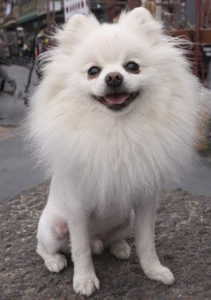
EGT or EGT+ is an edging process on some of the Andis products. EGT stands for Electro-glide technology. They have a stronger coating, and the plus version has a specific tooth pattern for the smoothest finish and the longest lasting blade.
CryogenX is an edging process used by the Oster brand on all of their blades. The Cryogenx process heats the blades up to allow the carbon to spread evenly throughout the blade, before cryogenically freezing the blades to lock the carbon in place. Their Elite brand goes a step further by adding a high-carbon coating to the blades for the ultimate strength and sharpness.
Dog Clipper Blade Sizes Chart
There are lots of options when it comes to the size of blades that you will want to use. The most common sizes are 3, 4, 5, 7, 9, 10, 15, 30, 40, and 50. Sizes 3, 4, 5, and 7 generally come in both fine-tooth or skip tooth designs, while the sizes 9 and higher only come in skip tooth. Blade #3 will leave your dog’s hair at 13 millimeters long, while the #30 blade will only leave it at 0.5 millimeters in length. In general, the higher the blade number, the shorter your dog’s hair will end up.

The closest shave will come from the 40 and 50 blade sizes, but these are usually used only by veterinarians who need a very close shave for surgical procedures. There are also fractional sizes like 5/8, 7/8, or 8 ½ size blades that are usually used for trimming between toes and feet.
You should use different sizes of blades for different cuts and different areas of your dog’s body. Generally, you will want a closer shave around your dog’s face and longer hair on his back and tail. There are specific recommendations for each breed available, but I have combined some of the most common breeds into a few recommendations below.
| Breed | Body | Head/Ears | Legs | Tail |
| Terriers | 7 or 5, Fine-tooth | 10 or shears | 10, 30, or shears | 4, 5, or 7, Fine-tooth or shears |
| Setters | 4, 5, or 7, Fine-tooth | 7 or 10 | Shears | Shears |
| Spaniels | 4, 5, or 7, Fine-tooth | 10 or 15 | 7, Fine-tooth | Not applicable |
| Retrievers | 7 or 5- Fine-tooth | Shears | 7 or 5- Fine-tooth | Shears |
| Poodles (Kennel Trim) | 7, Fine-tooth | 10 or 15 | 3, 4, or 5, | 10 or 15 |
Many dog owners have mixed breed animals, and if that’s you, there is no need to worry. You can still cut your dog’s hair on your own. It is just harder to find blade size recommendations for mixed breeds. The first thing you need to identify is what type of fur your dog has.
There are three main types of fur, smooth, curly, or wiry. Smooth coats should use 7F blades for the body and legs and shears for other body parts. Curly coats should use 3F or 4f for the body and 10 blades for the face. Wiry coats should use 5F or 7F blades for the body or tail and 10 blades for the ears.
Wahl Dog Clipper Blade Sizes
Wahl is one of the three most popular names in the dog clipper market. They have a wide variety of quality products, including some blade options that the other main brands don’t carry. In addition to the most common blade sizes, they also have 5-in-1 adjustable blades.

Andis Dog Clipper Blade Sizes
Andis is another one of the three best brands of dog clippers. They have a wide variety of options including their UltraEdge and Ceramic Edge lines that each come in the most common sizes. But they also have additional sizes available too. Here are some lists of sizes that come in each of the Andis product lines.
UltraEdge Blades: 40, 30, 15, 10, 9, 8 ½, 7, 7F, 6F, 5, 5F, 4 ½ F, 4, 4F, 3 ¾, 3 ¾F, 5/8, 5/8 Wide, 3/4, T-10.
CeramicEdge Blades: 40, 30, 15, 10, 9, 8 ½, 7, 7F, 5, 5F, 4, 4F, 3 ¾F, 5/8, 3/4.
EGT or EGT+ Blades: 40, 30, 15, 10, 7F, 5F. (Some sizes may not be available in both EGT and EGT+, but some will).
Proper Blade Maintenance
It doesn’t matter how great your blades are; if they are not properly maintained, they will deteriorate over time. Blade maintenance has three basic components: cleaning, oiling, and sharpening. There are several methods available for each type of blade maintenance, but it is important to know that you will most likely need to buy oils and cleaning products for your blades separately.
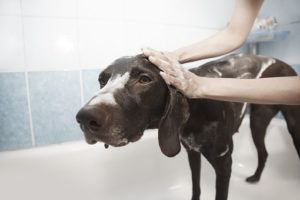
To apply oil to your blades, you should put a drop on each end of the blade and at back rail. Then let the blades run until the oil is soaked in and evenly distributed along the length of the blade. This process should only take about ten seconds. If you would like to add a cooling spray or lubricant to your blades, you can use the same process as the oiling.

![12 Best Dog Foods for Toy Breeds [Buyer's Guide] 12 Best Dog Foods for Toy Breeds [Buyer's Guide]](https://shihtzuexpert.com/wp-content/uploads/2019/05/3-5.jpg)
![12 Best Dog Clippers for Shih Tzu [Fun & Easy Grooming] 12 Best Dog Clippers for Shih Tzu [Fun & Easy Grooming]](https://shihtzuexpert.com/wp-content/uploads/2017/04/Best-Dog-Clippers-for-Shih-Tzu-1.png)

![6 Best Dog Treadmills for 2023 [Buyer’s Guide] 6 Best Dog Treadmills for 2023 [Buyer’s Guide]](https://shihtzuexpert.com/wp-content/uploads/2019/04/Best-Dog-Treadmills-1.png)
